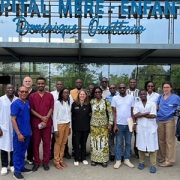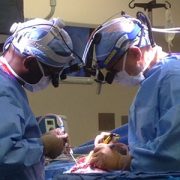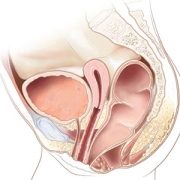Better standardized care for total colonic Hirschsprung disease

Clinicians can better manage care for children with total colonic Hirschsprung disease by drawing on the collective expertise from the people who have seen and treated patients with this condition, says Marc Levitt, M.D.
Clinicians can better manage care for children with total colonic Hirschsprung disease, a rare form of the condition, by drawing on the collective expertise from the people who have seen and treated patients with this condition, says Marc Levitt, M.D., chief of Colorectal and Pelvic Reconstruction at Children’s National Hospital.
What is it?
Dr. Levitt and fellow experts within the APSA Hirschsprung Disease Interest group are working together to develop recommendations based on their collective experiences managing the condition. Their recommendations will include specifics for the diagnosis and management of total colonic Hirschsprung disease (a rare type of Hirschsprung disease that involves the entire colon) before and after reconstruction, such as diagnostic criteria, surgical approaches, bowel management, diet, antibiotic prophylaxis, colonic irrigations and post-surgical considerations.
Specifically, the group’s consensus findings and recommendations include:
- Specific information about using a contrast enema for this diagnosis — namely that there is no obvious transition zone identified.
- The importance of a surgical approach of colonic mapping to obtain definitive pathology and ileostomy at the time of diagnosis, which is key to getting a child with this condition feeding and growing.
- Monitoring that growth with nutritional assessment and oral sodium supplementation are vital to their care.
- High output stomas and loose stool after pull-through can be more readily treated now with anti-motility agents, and better care of the parastomal and perineal skin.
Why does it matter?
Children with total colonic Hirschsprung disease are unique among children with Hirschsprung disease. They present specific pre- and post-operative management challenges. Creating and sharing consensus guidelines will create a rational, expert-based approach to diagnosing and managing the condition based on direct clinical experience, that others can draw from. Because the condition is relatively rare, care decisions historically have been made based mainly on literature about it. However, that literature often shows a lack of clear consensus on how to approach the condition.
Children’s National leads the way
Dr. Levitt and his colleagues collectively have seen more cases of total colonic Hirschsprung disease than any other clinicians in the world and have helped to author better guidelines specifically to try to standardize the pre- and post-operative management of this patient group. The goal is to improve the likelihood of a better outcome for the child no matter where a family goes for care.










